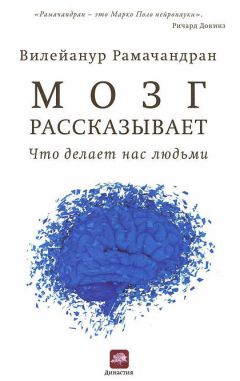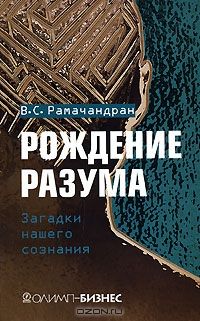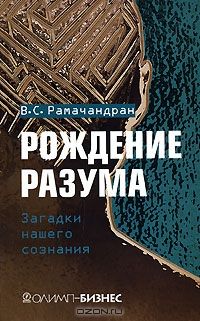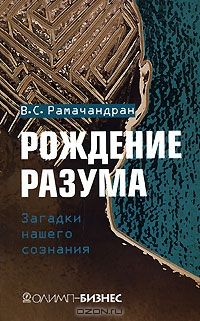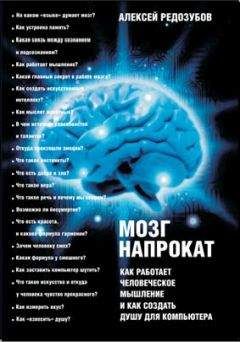Вилейанур Рамачандран - Мозг рассказывает. Что делает нас людьми
Buccino, G., Vogt, S., Ritzl, A., Fink, G. R., Zilles, K., Freund, H. J., et al. (2004). Neural circuits underlying imitation of hand actions: An event related fMRI study. Neuron, 42,323–334.
Bufalari, I., Aprile, Т., Avenanti, A., Di Russo, F., & Aglioti, S. M. (2007). Empathy for pain and touch in the human somatosensory cortex. Cerebral Cortex, 17, 25532561.
Bujarski, K., & Sperling, M. R. (2008). Post‑ictal hyperfamiliarity syndrome in focal epilepsy. Epilepsy and Behavior, 13(3), 567–569
Caccio, A., De Blasis, E., Necozione, S., & Santilla, V. (2009). Mirror feedback therapy for complex regional pain syndrome. The New EnglandJournal of Medicine, 361 (6), 634–636.
Campbell, A. (1837, October). Opinionism [Remarks on «New School Divinity,” in The Cross and Baptist Journal]. The Millennial Harbinger [New Series], 1, 439. Retrieved August 2010 from http://books.google.com.
Capgras, J., & Reboul‑Lachaux, J. (1923). L’illusion des «sosies» dans un delire systematise chronique. Bulletin de la Societe Clinique de Medecine Mentale, 11, 6–16.
Carr, L., Iacoboni, М., Dubeau, М. C., Mazziotta, J. C., & Lenzi, G. L. (2003). Neural mechanisms of empathy in humans: A relay from neural systems for imitation to limbic areas. Proceedings of the National Academy of Sciences of the USA, 100, 5497–5502.
‘Carter, R. (2003). Exploring consciousness. Berkeley: University of California Press.
‘Chalmers, D. (1996). The conscious mind. New York: Oxford University
Press.
Chan, B. L., Witt, R., Charrow, A. P., Magee, A., Howard, R., Pasquina, P.
F., et al.
(2007). Mirror therapy for phantom limb pain. The New England Journal of Medicine, 357,2206–2207.
‘Churchland P. S. (1986). Neurophilosophy: Toward a Unified science of the mind/ brain. Cambridge, MA: MIT Press.
‘Churchland, P., Ramachandran, V. S., & Sejnowski, T. (1994). A critique of pure vision. In C. Koch & J. Davis (Eds.), Large‑scale neuronal theories of the brain (pp. 23–47). Cambridge, MA: MIT Press.
Clarke, S., Regli, L., Janzer, R. C., Assal, G., & de Tribolet, N. (1996). Phantom face: Conscious correlate of neural reorganization after removal of primary sensory neurons. Neuroreport, 7,2853–2857.
‘Corballis, М. C. (2002). From hand to mouth: The origins of language. Princeton, NJ: Princeton University Press. Corballis, М. C. (2009). The evolution of language. Annab of the New York Academy of Sciences, 1156,1943.
‘Craig, A. D. (2009). How do you feel‑now? The anterior insula and human awareness. Nature Reviews Neuroscience, 10, 59–70.
‘Crick, F. (1994). The astonishing hypothesis: The scientific search for the soul. New York: Charles Scribner’s Sons.
‘Critchley, М. (1953). The parietal lobes. London: Edward Arnold.
‘Cytowic, R. E. (1989). Synesthesia: A union of the senses. New York; Springer. ‘Cytowic, R. E. (2003). The man who tasted shapes. Cambridge, MA: MIT Press.
(Original work published 1993 by G. P. Putnams Sons)
‘Damasio, A. (1994). Descartes ’ error. New York: G. P. Putnam.
‘Damasio, A. (1999). The feeling of what happens: Body and emotion in the making of Consciousness. New York: Harcourt.
‘Damasio, A. (2003). Lookingfor Spinoza: Joy, sorrow and the feeling brain. New York: Harcourt.
Dapretto, М., Davies, M. S., Pfeifer, J. H., Scott, A. A., Sigman, М., Bookheimer, S. Y., et al. (2006). Understanding emotions in others: Mirror neuron dysfunction in children with autism spectrum disorders. Nature Neuroscience, 9, 28–30.
‘Dehaene, S. (1997). The number sense: How the mind creates mathematics. New York: Oxford University Press.
‘Dennett, D. C. (1991). Consciousness explained. Boston: Little, Brown. Devinsky, O. (2000). Right hemisphere dominance for a sense of corporeal and emotional self. Epilepsy and Behavior, 1(1), 60–73 ‘Devinsky, O. (2009). Delusional misidentifications and duplications: Right brain lesions, left brain delusions. Neurology, 72(80–87).
Di Pellegrino, G„Fadiga, L., Fogassi, L., Gallese, V., & Rizzolatti, G.
(1992). Understanding motor events: A neurophysiological study. Experimental Brain Research, 91,176–180.
Domino, G. (1989). Synesthesia and creativity in fine arts students: An empirical look.
Creativity Research Journal, 2,17–29.
‘Edelman, G. M. (1989). The remembered present: A biological theory of consciousness.
New York: Basic Books.
‘Ehrlich, P. (2000). Human natures: Genes, cultures, and human prospect.
Harmondsworth, UK: Penguin Books.
Eng, K„Siekierka, E., Pyk, P., Chevrier, E., Hauser, Y., Cameirao, М., et al. (2007). Interactive visuo‑motor therapy system for stroke rehabilitation. Medical and Biological Engineering and Computing, 45,901–907.
‘Enoch, M. D., & Trethowan, W. H. (1991). Uncommon psychiatric
syndromes (3rd ed.). Oxford: Butterworth‑Heinemann.
‘Feinberg, Т. E. (2001). Altered egos: How the brain creates the self. Oxford University Press.
Fink, G. R., Marshall, J. C., Halligan, P. W., Frith, C. D., Driver, J., Frackowiak, R. S., et al. (1999). The neural consequences of conflict between intention and the senses. Brain, 122,497–512.
First, M. (2005). Desire for an amputation of a limb: Paraphilia, psychosis, or a new type of identity disorder. Psychological Medicine, 35,919–928.
Flor, H., Elbert, Т., Knecht, S., Wienbruch, C., Pantev, C„Birbaumer, N., et al. (1995). Phantom‑limb pain as a perceptual correlate of cortical reorganization following arm amputation. Nature, 375,482–484.
Fogassi, L., Ferrari, P. F., Gesierich B., Rozzi, S., Chersi, F., & Rizzolatti,
F. (2005, April 29). Parietal lobe: From action organization to intention
understanding. Science, 308,662–667.
Friedmann, С. Т. Н., & Faguet, R. А. (1982). Extraordinary disorders of human behavior. New York: Plenum Press.
Frith, C. & Frith, U. (1999, November 26). Interacting minds‑A biological basis. Science, 286, 1692–1695.
Frith, U., & Happe, F. (1999). Theory of mind and self consciousness: What is it like to be autistic? Mind and Language, 14,1–22.
Gallese, V., Fadiga, L., Fogassi, L., & Rizzolatti, G. (1996). Action recognition in the premotor cortex. Brain, 119, 593–609.
Gallese, V., & Goldman, A. (1998). Mirror neurons and the simulation theory of mindreading. Trends in Cognitive Sciences, 12,493–501.
Garry, М. I., Loftus, A., & Summers, J. J. (2005). Mirror, mirror on the wall: Viewing a mirror reflection of unilateral hand movements facilitates ipsilateral M1 excitability. Experimental Brain Research, 163,118–122.
‘Gawande, A. (2008, June, 30). Annals of medicine: The itch. New Yorker, pp. 58–64.
‘Gazzaniga, M. (1992). Nature’s mind. New York: Basic Books.
‘Glynn, I. (1999). An anatomy of thought. London: Weidenfeld & Nicolson.
‘Greenfield, S. (2000). The human brain: A guided tour. London: Weidenfeld & Nicolson.
‘Gregory, R. L. (1966). Eye and brain. London: Weidenfeld & Nicolson. Gregory, R. L.
(1992). Odd perceptions. New York: Routledge.
Grossenbacher, P. G., & Lovelace, С. T. (2001). Mechanisms of synesthesia: Cognitive and physiological constraints. Trends in Cognitive Sciences, 5(1), 36–41.
Happe, F., & Frith, U. (2006). The weak coherence account: Detail‑focused cognitive style in autism spectrum disorders. Journal of Autism and
Developmental Disorders,
36(1), 5–25.
Happe, F., & Ronald, A. (2008). The «fractionable autism triad»: A review of evidence from behavioural, genetic, cognitive and neural research. Neuropsychology Review, 18(4), 287–304.
Harris, A. J. (2000). Cortical origin of pathological pain. The Lancet, 355, 318–319.
Havas, H., SchifFman, G., & Bushnell, M. (1990). The effect of bacterial vaccine on tumors and immune response of ICR/Ha mice. Journal of Biological Response Modifiers, 9,194–204.
Hirstein, W., Iversen, P., Ramachandran, V. S. (2001). Autonomic responses of autistic children to people and objects. Proceedings of the Royal Society of London, Series B: Biological Sciences, 268(1479), 1883–1888.
Hirstein, W., & Ramachandran, V. S. (1997). Capgras syndrome: A novel probe for understanding the neural representation and familiarity of persons. Proceedings of the Royal Society of London, Series B: Biological Sciences, 264(1380), 437–444.
Holmes, N. P., & Spence, C. (2005). Visual bias of unseen hand position with a mirror: Spatial and temporal factors. Experimental Brain Research, 166,489–497.
Hubbard, E. М., Arman, A. C., Ramachandran, V. S., & Boynton, G. (2005). Individual differences among grapheme‑color synesthetes: Brain‑behavior
correlations. Neuron, 45(6), 975–985.
Hubbard, E. М., Manohar, S., & Ramachandran, V. S. (2006). Contrast affects the strength of synesthetic colors. Cortex, 42(2), 184–194.
Hubbard, Е. М., & Ramachandran, V. S.(2005). Neurocognitive
mechanisms of synesthesia. Neuron, 48(3), 509–520.
«Hubei, D. (1988). Eye, brain, and vision. Scientific American Library Series. New York: W. H. Freeman.
Humphrey, N. (1992). A history of the mind. New York: Simon & Schuster. Humphrey, N. K. (1980). Nature s psychologists. InB. D. Josephson & V. S. Ramachandran (Eds.), Consciousness and the physical world: Edited proceedings of an interdisciplinary symposium on consciousness held at the University of Cambridge in January 1978. Oxford, UK/New York: Pergamon Press.
‘Humphreys, G. W., & Riddoch, M. J. (1998). To see but not to see: A case
study of visual agnosia. Hove, East Sussex, UK: Psychology Press.
’Iacoboni, M. (2008). Mirroring people: The new science of how we connect with others. New York: Farrar, Straus.
Iacoboni, М., & Dapretto, M. (2006, December). The mirror neuron system
and the consequences of its dysfunction. Nature Reviews Neuroscience, 7(12),
942–951.
Iacoboni, М., Molnar‑Szakacs, I., Gallese, V., Buccino, G., Mazziotta, J. C., & Rizzolatti, G. (2005). Grasping the intentions of others with one’s own mirror neuron system. PLoS Biology, 3(3). e79.
Iacoboni, М., Woods, R. P., Brass, М., Bekkering, H., Mazziotta, J. C., &
Rizzolatti, G. (1999, December 24). Cortical mechanisms of human imitation. Science, 286, 2526–2528.
Jellema, Т., Oram, M. W„Baker, С. I., & Perrett, D. I. (2002). Cell populations in the banks of the superior temporal sulcus of the macaque monkey and imitation. In
a. N. Melzoff & W. Prinz (Eds.), The imitative mind: Development, evolution, and brain bases (pp. 267–290). Cambridge, UK: Cambridge University Press.
Johansson, G. (1975). Visual motion perception. Scientific American, 236(6), 76–88.
‘Kandel, E. (2005). Psychiatry, psychoanalysis, and the new biology of the mind. Washington, DC: American Psychiatric Publishing.
‘Kandel, E. R., Schwartz, J. H., & Jessell, Т. M. (Eds.). (1991). Principles of neural science (3rd ed.). Norwalk, CT: Appleton & Lange.
Kanwisher, N., & Yovel, G. (2006). The fusiform face area: A cortical region specialized for the perception of faces. Philosophical Transactions of the Royal Society of London, Series B: Biological Sciences, 361, 2109–2128.
Karmarkar, A., & Lieberman, I. (2006). Mirror box therapy for complex regional pain syndrome. Anaesthesia, 61,412–413.
Keysers, C., & Gazzola, V. (2009). Expanding the mirror: Vicarious activity for actions, emotions, and sensations. Current Opinion in Neurobiology, 19, 666671.
Keysers, C., Wicker, B„Gazzola, V., Anton, J. L., Fogassi, L., & Gallese, V. (2004). A touching sight: SII/PV activation during the observation and experience of touch. Neuron, 42,335–346.
Kim, C. — Y., Blake, R., & Palmeri, T. J. (2006). Perceptual interaction between real and synesthetic colors. Cortex, 42,195–203.
‘Kinsbourne, M. (1982). Hemispheric specialization. American Psychologist, Ъ1, 222231.
Kolmel, К. F., Vehmeyer, К., & Gohring, E., et al. (1991). Treatment of advanced malignant melanoma by a pyrogenic bacterial lysate: A pilot study. Onkologie, 14, 411–417.
